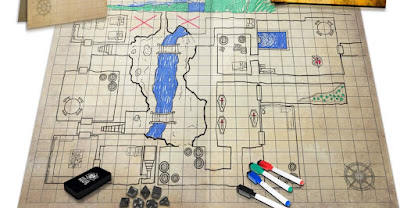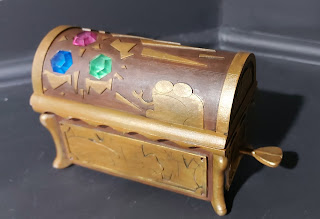Amadeo Vallejo started Vallejo Paints out of his garage in New Jersey in 1965. A Spanish immigrant, he could barely speak English, so his Dutch wife, Eugene Safranek, handled most of the business and PR, while Vallejo himself perfected his new style of acrylic paints.
Vallejo in his workshop in 1971.
SourceVallejo's early customers were primarily animation studios, particularly Hanna Barbera (of The Flintstones and Yogi Bear fame). Animators appreciated the smooth consistent colours and strong opacity of Vallejo's paints. And when they needed tens of thousands of painted cells for a half hour TV program, that amounted to alot of paint, and Vallejo's business did quite well.
Soon, however, Vallejo grew homesick for Spain (who likes living in New Jersey, anyway?), and in the early 1970s, against the recommendation of his business associates and friends, Vallejo and his wife packed up their business and moved to Barcelona. They were lucky to get in on the ground floor just as colour television and cartoons started to become popular in Europe. Being one of the only acrylic paint suppliers on the continent, Vallejo was soon exporting his products across Europe. This was quickly followed by advertising and marketing companies- this is back on the day before computers, when advertising artwork and graphic design was all done by hand.
Vallejo became the first producer of commercial, artist-grade, affordable tubes of acrylic paint in Europe. This revolutionised the fine arts industry, and by the early 80s Vallejo was working with art schools to produce a variety of lines of fine art paints, including for the new art style of airbrushing. Needless to say, business was booming.

Also in the 80s, Vallejo began making model and wargaming paints for third parties. Soon, however, people realized where the paint was coming from and started going to the source. By the early 90s, Vallejo had started their own line of model paints called Model Color, which was immensely successful and is still recognized as one of the top brands today. They also developed the dropper bottle, which is way better than the stupid pots that Games Workshop uses. With the advent of computer-animation in the 1990s, the animation business line of Vallejo dried up, but was quickly replaced by their growing scale modeling and wargaming line. In the 2000s they added Game Color, marketed specifically toward tabletop gamers, which was also successful.
Eugenie (in the back) and Alex Vallejo (right) at a convention in Valencia in 1978.
SourceAmadeo Vallejo died in 2019, but the business continues to be run by his oldest son Alex and his brothers. Today they employ nearly 100 people and produce close to 2.5 million pounds of acrylic paint a year, making them one of the largest and most successful producers of fine art and model paint in the world. They have refused all offers for buy-outs and mergers, preferring to keep their business in the family and running the same way they have for nearly 60 years. They continue to innovate, just this year refreshing their line of Game Color paints, making their formula even better if possible, and adding a sweet line of contrast paints as well.
Bonus V: Vader
Talking about object-source lighting the other day got me wanting to try it again. I went back to the same model that first introduced me to OSL and tried to recreate it:
It's definitely not perfect, but it's miles ahead of my previous attempts. The biggest thing I would change is to cut down on the amount of red on the base - I think it would stand out more if it wasn't SO much red. I would also add more highlights overall, so the brightest spots would be even brighter. Still, I'm improving, so that's a plus.
Also, I've discovered that I love glazing, and I need to focus on improving that, as well.
(And and for reference, this was painted mostly with Army Painter paints, however there are definitely a few Vallejo shades and varnishes on there)
Anyway, that's all for now. Only a few days left!
Hugs & kisses,
-CDGK


















































